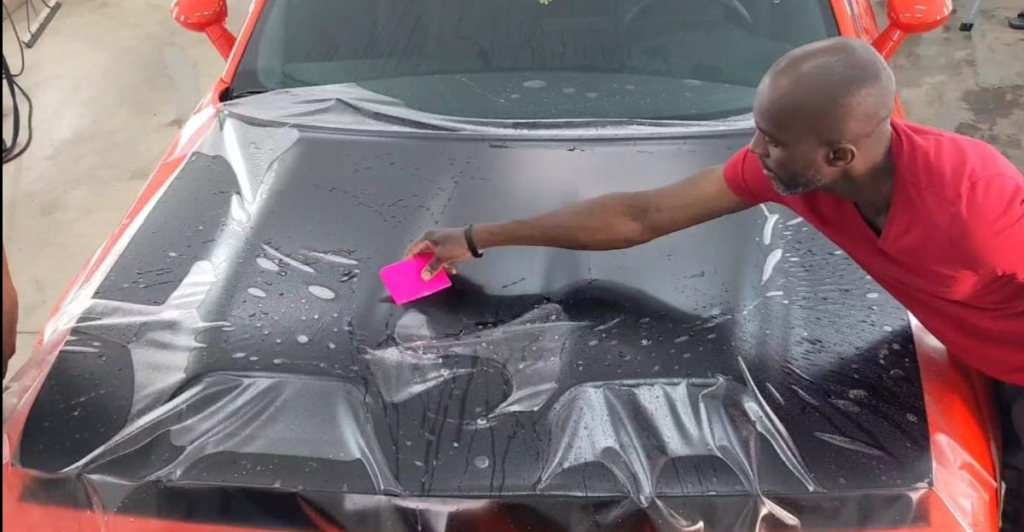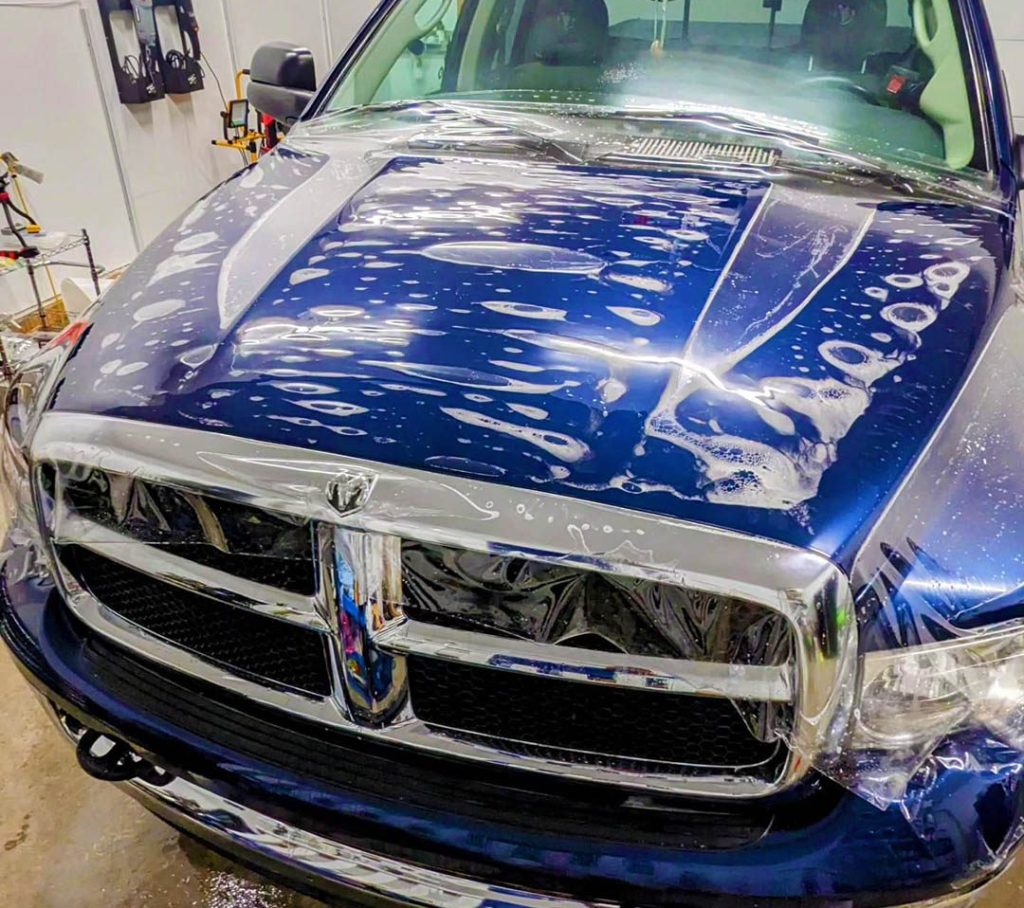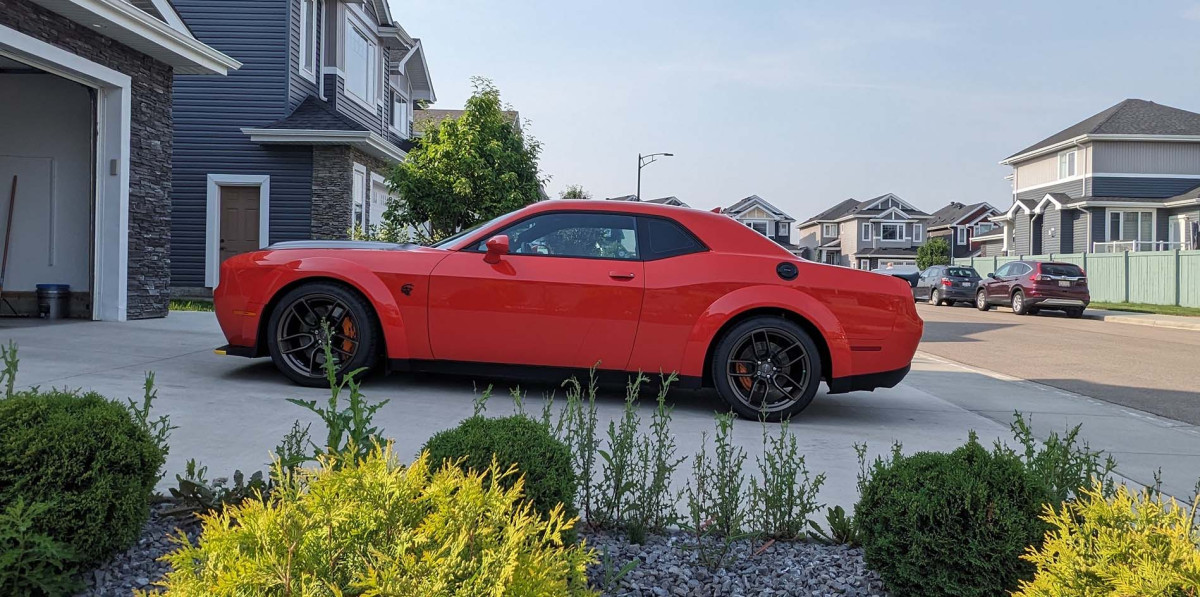What is PPF?
Paint Protection Film, also known as PPF or clear bra, is a specialized film made of thermoplastic polyurethane (TPU) that serves as a shield for the painted surfaces of vehicles.
What is the primary purpose of PPF?
The primary purpose of Paint Protection Film, or PPF, is to safeguard the car’s paint from rock chips, scratches, swirls, and other forms of abrasions, as well as environmental factors. In simple terms, it acts as a shield for protecting and maintaining your car’s original paint.
Your car stays fresh and protected when you have PPF on it. Imagine walking in a dusty environment without a cap on while having this nice haircut or dreads. You can imagine the full story, right? The opposite is true when you have a cap on. In this scenario, your hair is your car, and the cap is the PPF, or Paint Protection Film for your car.

Where does PPF originally come from?
Paint protection Film or PPF, was initially created by the US Army during the Vietnam War around 1955 and 1975 to protect helicopter rotor blades and other military transport components. This military-grade innovation eventually transitioned into the consumer market.
Can PPF protect my car?
Yes! PPF can protect your car. With PPF’s robust effectiveness in shielding helicopter blades from airborne debris, you can be confident that PPF, or Paint Protection Film, has the highest capabilities of safeguarding your car against environmental factors such as abrasions, rock chips, swirls, and anything that has the tendency to negatively work against the aesthetics of your car’s paint!

Is PPF worth the investment?
Paint Protection Film is worth every penny of your investment! The dangers of not protecting your car from environmental factors such as road debris, abrasions, rock chips, gravel, salt, and tar, among others, cannot be emphasized enough. These factors cause rust. For instance, salt from winter road treatments can aid in rust forming on your car’s paint, thereby reducing the value of your vehicle and costing extra bucks to repair to get your car back in shape.

Road film and grime can cause your car’s paint to change in aesthetics, making your vehicle look older than its expected lifespan. Rocks can hit your vehicle as well and cause noticeable damage to your cherished vehicle’s finish. You and I know you don’t want to be seen driving in a dull-looking car!
To prevent all these damages, Paint Protection Film or PPF is the best solution to end all of such headaches. PPF offers the best protection against such damages and offers your car the rock-solid protection it deserves, as well as keeping the car’s value intact. So yes, PPF is worth the investment!
How long does PPF last on cars?
PPF or Paint Protection Film can last as long as 5-10 years on cars. The PPF lifespan depends on factors such as the experience of the detailing shop working on your car, the driving conditions of the vehicle, and the method of care among other factors. It is natural the self-healing properties will reduce over time due to wear and tear which is normal. however, people who install PPF on their vehicles enjoy the benefits of keeping their vehicles fresh, clean, and spotless for the long haul.
Does PPF have any disadvantages?
Despite its ability to preserve a car’s finish, some drawbacks warrant consideration. Primarily, the high cost associated with PPF installation can dissuade potential users, especially for full-body coverage. Additionally, removing aged or damaged PPF can be a labor-intensive task, potentially risking harm to the underlying paint if not carefully executed. While PPF effectively guards against minor scratches, it may not offer comprehensive protection against heavy impacts or deep scratches, limiting its effectiveness in certain scenarios.
Furthermore, there might be a noticeable difference in appearance between areas covered and not covered by the film, impacting the overall visual appeal of the vehicle once the film is removed. Hence, the reason a full front coverage for instance is recommended over partial. But, partial is still better than nothing.
A bumper or hood covered with unsightly rock chips and scratches is worse than a slight shade in color difference if a car receives partial installs (24″ hood coverage for instance).
That’s why choosing a skilled expert, like the ones at Gabriel Details, Paint Protection Film (PPF) is crucial. They can ensure that the film not only protects your car but also maintains its aesthetic appeal.


